Welcome to our comprehensive guide on Cryptocoryne Tropica care and aquarium tips. As passionate enthusiasts in the aquarium hobby, we understand the importance of providing the best care for your aquatic plants.
Cryptocoryne Tropica, a popular plant among aquarists, offers a beautiful addition to any aquarium with its vibrant green leaves and unique appearance.
In this guide, you’ll gain valuable insights into the origins and characteristics of Cryptocoryne Tropica and essential care tips for beginners.
We’ll discuss the optimal water temperature and pH balance, key nutrients and fertilization techniques, and how to manage the light requirements for healthy growth.
Furthermore, we will explore substrate choices, propagation methods, and aquascaping techniques and provide solutions for common issues.

Key Takeaway
- Cryptocoryne Tropica prefers water temperatures of 72°F to 82°F and a pH range of 6.0 to 7.5.
- Place in foreground to background with low to moderate lighting.
- Opt for fine-grained, nutrient-rich substrates for propagation and growth.
- Address issues like melting leaves with stable conditions and nutrient supplements.
- Acknowledge its cultural significance and utility beyond aquariums.
- Aquascape thoughtfully with companion plants and adjust lighting accordingly.
- Ensure optimal conditions for growth and propagation.
Quick Stats
| Attribute | Details |
| Family Name | Araceae |
| Origin | India, Bangladesh |
| Height | 40-60 cm (15-24 inches), can grow taller in optimal conditions |
| pH Range | 6.0 – 7.5 |
| CO2 Requirement | Low to Moderate |
| Growth Rate | Moderate |
| Care Level | Easy |
| Color Form | Green, with long, spiraled leaves |
| Water Conditions | 22-28°C (72-82°F), adaptable to a wide range of hardness |
| Max Size | Leaves can reach over 60 cm (24 inches) in height |
| Lighting | Low to Moderate |
| Supplements | Root tabs and liquid fertilizers are beneficial |
| Placement | Mid-ground to Background |
| Propagation | By runners or separating the rhizome |
What Is Cryptocoryne Tropica?
Cryptocoryne Tropica is a species of aquatic plant originating from India and Sri Lanka. Known for its vibrant green leaves and moderate growth rate, it is a popular choice among aquarium enthusiasts.
This plant typically thrives in warm, tropical climates with soft, slightly acidic water conditions. It is characterized by its broad, spiraled leaves and can reach heights of up to 40-60 cm (15-24 inches).
Cryptocoryne Tropica is versatile in aquarium layouts, suitable for placement in the foreground to background, and is relatively low-maintenance, making it ideal for beginners.
Origins And Characteristics
In this section, we will delve into Cryptocoryne Tropica’s origins and characteristics. We will explore its natural habitat, where it is commonly found, and the unique features that make it a popular choice among aquarium enthusiasts.
Understanding Cryptocoryne Tropica’s natural environment can provide valuable insights into its care requirements and help create a suitable aquatic environment in your aquarium.
| Origins | Characteristics |
| Cryptocoryne Tropica is native to the rivers and streams of Sri Lanka and India. | Cryptocoryne Tropica is known for its vibrant green leaves, which are often marked with striking patterns and shades of red or brown. The plant typically grows to a height of 10-20 centimeters and forms dense clusters of leaves. |
| It thrives in warm, tropical climates with moderate water flow and prefers soft, slightly acidic water conditions. | The leaves of Cryptocoryne Tropica are relatively broad and have a leathery texture, allowing the plant to withstand varying water conditions. It has a relatively slow growth rate compared to other aquarium plants, which makes it ideal for creating a low-maintenance aquascape. |
| In its natural habitat, Cryptocoryne Tropica often grows along riverbanks, where it benefits from nutrient-rich sediment and a moderate amount of sunlight. | Due to its hardy nature, Cryptocoryne Tropica can adapt to a range of lighting intensities, making it suitable for both low-light and high-light aquarium setups. It can also tolerate a wide range of water parameters, although stable conditions are ideal for its overall health and growth. |
Temperature Parameters For A Robust Growth
For robust growth of Cryptocoryne tropica, maintain water temperatures within the range of 22°C to 28°C (72°F to 82°F). This temperature range mimics its natural habitat conditions, promoting healthy growth and development.
Consistent temperatures within this range help ensure optimal metabolic activity and nutrient uptake, supporting vigorous growth of Cryptocoryne tropica in the aquarium.
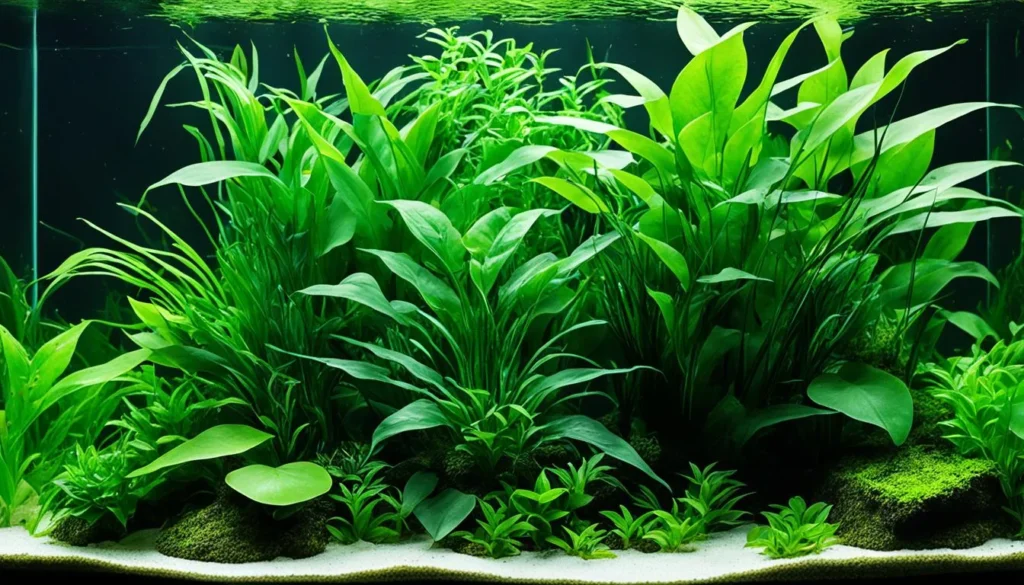
Optimal Water Temperature And pH Balance
- Cryptocoryne Tropica thrives in temperatures ranging from 72°F to 82°F (22°C to 28°C). Maintaining a consistent water temperature within this range is crucial for its overall health and development.
- Maintaining a pH balance between 6.0 and 7.5 is ideal for creating a suitable environment for this plant to thrive.
Key Nutrients And Fertilization Techniques
- Cryptocoryne Tropica requires several key nutrients for healthy growth. Iron, potassium, and micronutrients are essential for vibrant foliage and robust root development.
- To provide these nutrients, you can utilize liquid fertilizers or root tabs specifically formulated for aquatic plants. It is important to follow the manufacturer’s instructions and avoid over-fertilization, as it can lead to algae growth and other issues.
Managing Light Requirements For Healthy Growth
- The lighting requirements for Cryptocoryne Tropica may vary depending on the intensity and duration of light exposure. Moderate to low lighting is generally recommended for this plant to avoid excessive algae growth.
- It’s essential to provide a photoperiod of 8 to 10 hours of light per day, simulating natural daylight cycles. When selecting lighting equipment, consider LED lights with adjustable intensity settings to meet the specific needs of Cryptocoryne Tropica.
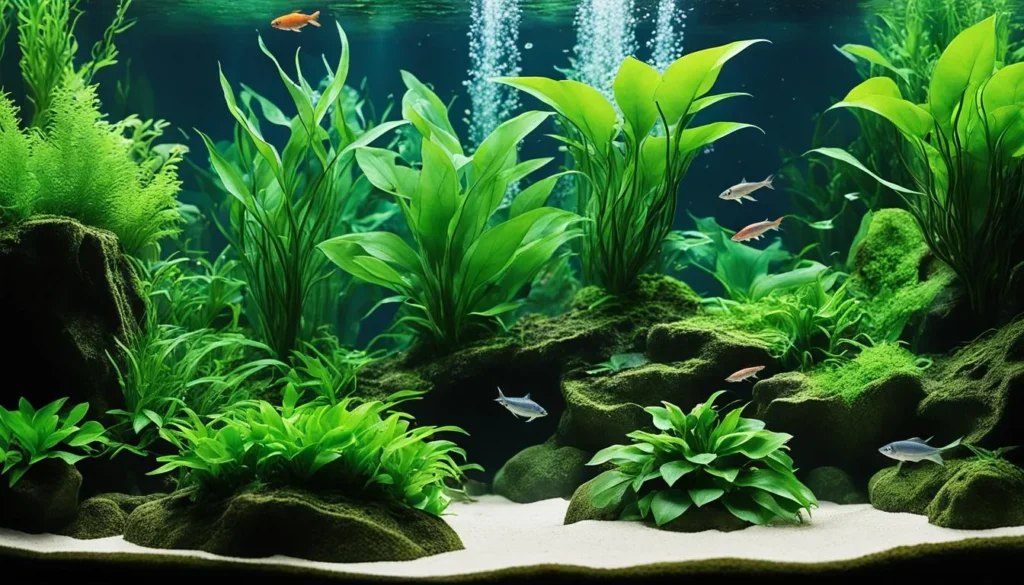
The Importance Of Substrate Choice For Cryptocoryne Tropica
When it comes to caring for Cryptocoryne Tropica, selecting the right substrate is essential for the plant’s growth and overall health. The substrate not only serves as the plant’s foundation but also plays a crucial role in providing essential nutrients and supporting root development.
Selecting The Right Substrate Type
- When choosing a substrate for Cryptocoryne Tropica, it is important to consider its natural habitat. This plant is native to the rivers and streams of Southeast Asia, where it grows in soft, sandy substrates. Therefore, replicating this environment in your aquarium is key to its success.
- To mimic the plant’s natural habitat, opt for substrates that are fine-grained and sandy, such as aquatic plant soil or sand. These substrates provide good drainage and promote healthy root development, allowing the plant to anchor and establish itself properly.
RELATED: The Aquatic Wonder Bacopa Australis To Transform Your Aquascape
Integrating Cryptocoryne Tropica Into Your Aquarium Layout
- Foreground Placement: Placing Cryptocoryne Tropica in the foreground of your aquarium adds depth and dimension to your aquascape. Its compact size and vibrant green leaves create a beautiful contrast against other plants and hardscape elements.
- Midground Placement: Cryptocoryne Tropica can also be placed in the midground of your tank, acting as a transition between the foreground and background plants. Its medium height and bushy growth create a lush and natural look.
- Background Placement: Cryptocoryne Tropica can be placed in the background for larger aquariums, providing a lush green backdrop for other plants and fish. Its tall and slender leaves can create an impressive visual impact.
Recommended Tank Size
- Minimum Tank Size: Recommended tank size for Cryptocoryne tropica is 10 gallons (approximately 38 liters).
- Adequate Space: Ensure the tank provides ample space for planting and allows for proper water circulation.
- Optimal Environment: A larger tank offers more stability in water parameters and facilitates better aquascaping options.
- Healthy Growth: Adequate space promotes healthy root development and allows Cryptocoryne tropica to thrive.
- Aquatic Ecosystem: Larger tanks support a more balanced ecosystem, enhancing the overall health of Cryptocoryne tropica and other aquatic inhabitants.
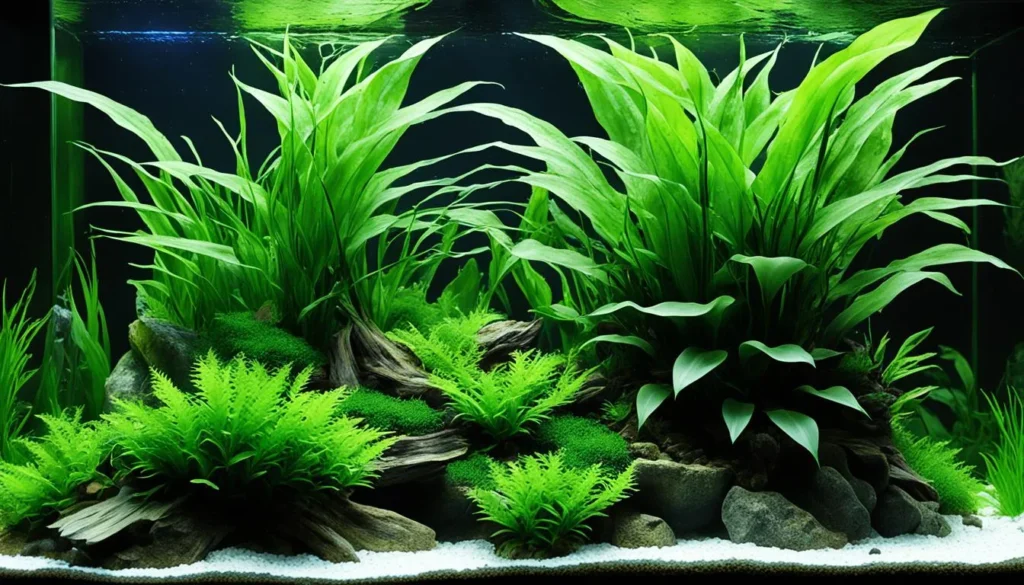
Suitable Tank Mates For Cryptocoryne Tropica
- Tetras: Species like Neon Tetras, Cardinal Tetras, and Rummy Nose Tetras are peaceful schooling fish that can complement the calm nature of Cryptocoryne tropica.
- Gouramis: Dwarf Gouramis and Honey Gouramis are compatible with Cryptocoryne tropica due to their peaceful temperament and preference for similar water conditions.
- Corydoras Catfish: Corydoras species, such as Bronze Corydoras or Panda Corydoras, are bottom-dwelling fish that help clean up the substrate and are unlikely to disturb Cryptocoryne tropica.
- Shrimp: Dwarf shrimp species like Cherry Shrimp or Amano Shrimp can safely inhabit tanks with Cryptocoryne tropica and contribute to algae control and substrate cleaning.
- Snails: Peaceful snails like Nerite Snails or Malaysian Trumpet Snails can coexist with Cryptocoryne tropica and aid in algae management.
- Other Cryptocoryne Species: Different Cryptocoryne species, such as Cryptocoryne wendtii or Cryptocoryne parva, can be planted alongside Cryptocoryne tropica to create a diverse and natural-looking aquascape.
RELATED: Cryptocoryne Wendtii Green Planting Guide For Beginners
Nutrition Requirement For The Plant
Cryptocoryne tropica requires a balanced supply of both macro and micro nutrients to support healthy growth and development. Here’s an explanation of the essential macro and micro nutrients needed by the plant:
Macro Nutrients
- Nitrogen (N): Nitrogen is a vital component of chlorophyll, the pigment responsible for photosynthesis. It is necessary for the synthesis of proteins and nucleic acids, essential for cell growth and development.
- Phosphorus (P): Phosphorus plays a key role in energy transfer processes within the plant, particularly in ATP (adenosine triphosphate) synthesis. It is essential for root development, flowering, and overall plant growth.
- Potassium (K): Potassium regulates water uptake and transportation within the plant, enhances disease resistance, and improves overall plant vigor. It is involved in enzyme activation and carbohydrate metabolism.
Micro Nutrients
- Iron (Fe): Iron is crucial for chlorophyll synthesis and photosynthesis. It is also involved in enzyme activation and electron transport processes. Iron deficiency can lead to chlorosis (yellowing of leaves) in Cryptocoryne tropica.
- Magnesium (Mg): Magnesium is a constituent of chlorophyll molecules and plays a vital role in photosynthesis. It is involved in energy metabolism and enzyme activation.
- Calcium (Ca): Calcium is essential for cell wall structure and integrity. It helps maintain cell membrane permeability and regulates cell division and growth.
- Sulfur (S): Sulfur is a component of amino acids, vitamins, and coenzymes. It is essential for protein synthesis, enzyme activation, and overall plant metabolism.
- Manganese (Mn): Manganese acts as an enzyme activator and is involved in photosynthesis, respiration, and nitrogen metabolism.
- Zinc (Zn): Zinc is essential for enzyme activation and protein synthesis. It plays a role in regulating growth hormones and carbohydrate metabolism.
- Copper (Cu): Copper is involved in electron transport processes and enzyme activation. It plays a role in photosynthesis and plant metabolism.
- Molybdenum (Mo): Molybdenum is a component of enzymes involved in nitrogen metabolism and nitrate reduction.
Cultivation
Here’s a guide on the cultivation of aquatic plants, including preparation for growth, planting, and initial care:
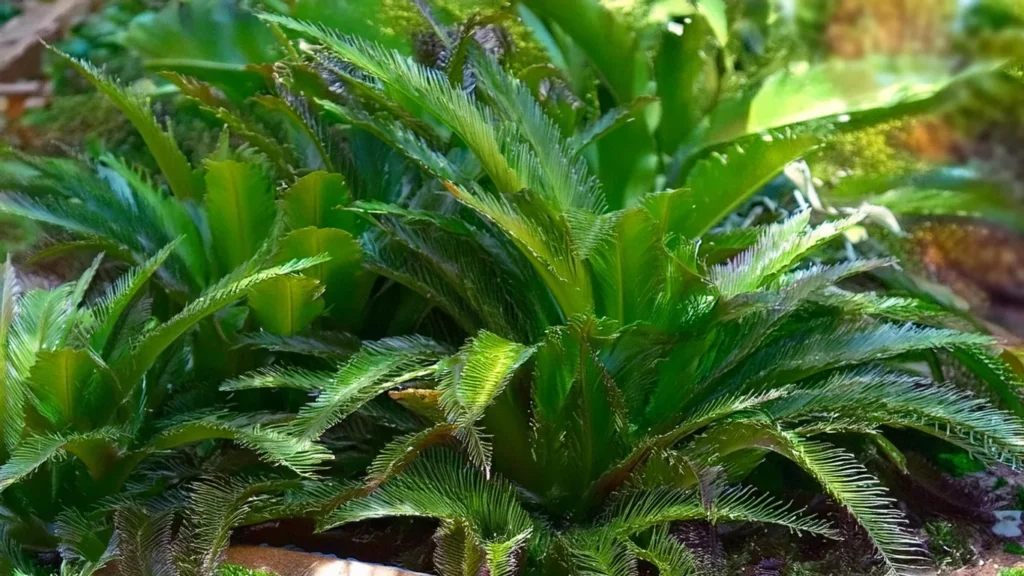
Preparation For Growth
- Selecting Plants: Choose healthy plants from reputable sources. Look for vibrant foliage, firm stems, and healthy root systems.
- Tank Setup: Set up the aquarium with appropriate lighting, filtration, and heating equipment. Ensure that the substrate is suitable for plant growth and that water parameters are within the preferred range for the chosen plants.
- Nutrient Supplementation: Add a nutrient-rich substrate or incorporate root tabs to provide essential nutrients for plant growth. Consider dosing liquid fertilizers to ensure a balanced nutrient supply.
- Cycling the Tank: Cycle the aquarium to establish a stable nitrogen cycle. This process helps establish beneficial bacteria that convert harmful ammonia and nitrite into less toxic nitrate, creating a healthy environment for plants.
RELATED: How To Plant Ceratopteris Siliquosa In Your Aquarium?
Planting
- Preparing Plants: Trim any damaged or unhealthy leaves and roots from the plants before planting. This encourages new growth and prevents the spread of potential diseases or pests.
- Placement: Plan the layout of the aquarium and consider the growth requirements of each plant species. Arrange taller plants towards the back and shorter plants towards the front to create depth and visual interest.
- Planting Techniques: Gently remove plants from their pots and separate any tangled roots. Plant each specimen into the substrate, ensuring that the roots are buried and the crown (where the roots meet the stem) is at or slightly above the substrate level.
- Spacing: Provide adequate spacing between plants to allow for growth and prevent overcrowding. This helps ensure that each plant receives sufficient light and nutrients.
Initial Care
- Lighting: Provide appropriate lighting for the plants’ needs. Monitor the intensity and duration of light to prevent algae overgrowth and ensure optimal photosynthesis.
- Watering: Fill the tank with dechlorinated water and maintain proper water parameters. Perform regular water changes to remove accumulated waste and replenish essential nutrients.
- Nutrient Supplementation: Monitor plant growth and adjust nutrient supplementation as needed. Continue dosing fertilizers according to the manufacturer’s recommendations to promote healthy growth.
- Pruning and Maintenance: Trim dead or decaying leaves and prune overgrown stems regularly to maintain the desired shape and appearance of the plants. Remove any debris or algae that may accumulate on the leaves or substrate.
- Observation: Keep a close eye on the plants for signs of distress, such as yellowing leaves, stunted growth, or algae outbreaks. Address any issues promptly to prevent further damage to the plants and maintain a thriving aquatic environment.
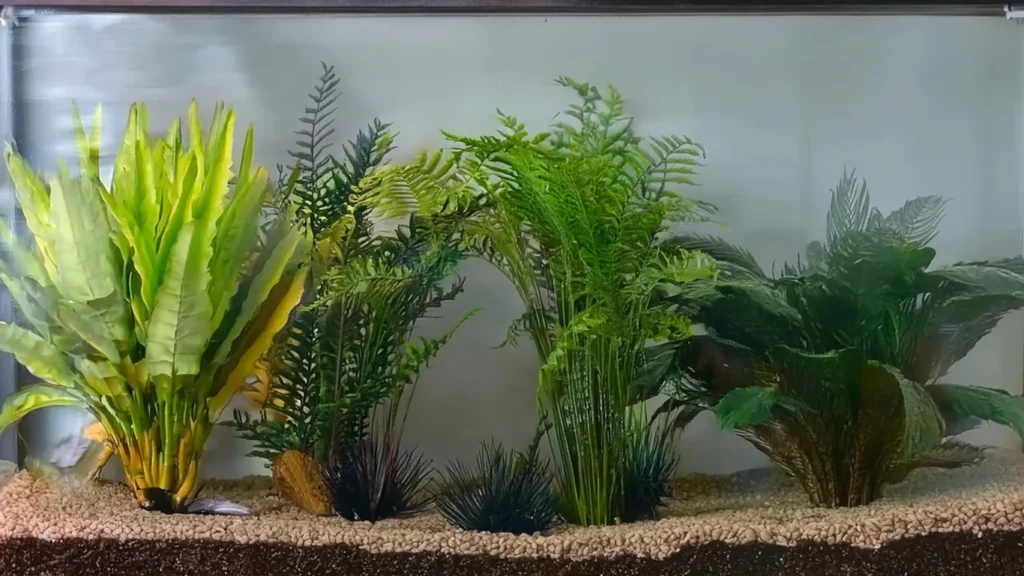
Plant Propagation Tips
To propagate Cryptocoryne Tropica through division, follow these steps:
- Carefully remove the plant from your aquarium, ensuring you disturb the roots as little as possible.
- Gently separate the plant into smaller clumps or individual plants. Use sharp, clean scissors or a knife to cut through the rhizome.
- Ensure each divided section has a healthy root system attached.
- Replant the divided sections into the desired location in your aquarium. Make sure the substrate fully covers the roots.
- Provide optimal care and maintenance to support the growth of the newly divided Cryptocoryne Tropica.
Benefits Of Cryptocoryne Tropica
- Aesthetic Appeal: With its vibrant green leaves and unique appearance, Cryptocoryne Tropica adds visual interest and enhances the overall aesthetics of the aquarium.
- Easy Care: Cryptocoryne Tropica is known for its ease of care, making it suitable for beginners and experienced aquarists alike. It can tolerate a wide range of water parameters and lighting conditions.
- Oxygenation: Like all aquatic plants, Cryptocoryne Tropica contributes to oxygenation in the aquarium, which is essential for the health of fish and other aquatic inhabitants.
- Natural Filtration: Cryptocoryne Tropica helps absorb excess nutrients from the water, reducing the risk of algae overgrowth and improving water quality. It also provides refuge and spawning sites for fish and invertebrates.
- Habitat Enhancement: The dense clusters of leaves formed by Cryptocoryne Tropica create hiding places and shelter for shy or small fish, promoting natural behavior and reducing stress.
RELATED: A Comprehensive Guide To Planting Cryptocoryne Wendtii Tropica
Dealing With Common Issues In Cryptocoryne Tropica Care
While caring for Cryptocoryne Tropica can be relatively straightforward, it is not uncommon to encounter some common issues.
In this section, we will address these issues and provide effective solutions and troubleshooting tips to help you overcome challenges in caring for Cryptocoryne Tropica.
One common issue is melting leaves. If you notice that the leaves of your Cryptocoryne Tropica are turning brown and disintegrating, it could be a sign of melting.
This can occur when the plant adapts to its new environment or experiences changes in water parameters. To address this issue, ensure that the plant is receiving adequate nutrients, maintain stable water conditions, and be patient as the plant adapts.
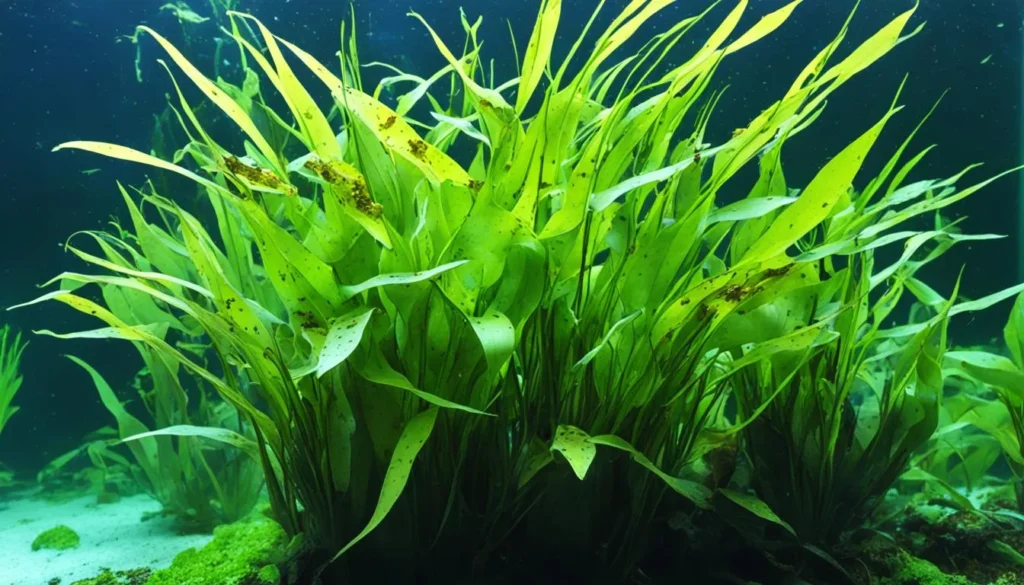
- Poor growth is another common issue that Cryptocoryne Tropica enthusiasts may encounter. If your plant is not growing as expected, it could be due to insufficient light, inadequate nutrients, or improper water parameters. To promote healthy growth, provide the plant with suitable lighting conditions, ensure the presence of essential nutrients through fertilization, and maintain optimal water parameters.
- Algae growth can also be a challenge when caring for Cryptocoryne Tropica. Algae can compete with the plant for nutrients and light, hindering its growth. To prevent excessive algae growth, maintain proper water circulation, regularly clean the aquarium, and ensure that the lighting period is not excessive. If algae become problematic, consider introducing algae-eating fish or shrimp to help keep it under control.
Conclusion
Caring for Cryptocoryne Tropica requires attention to detail and a thorough understanding of its origins and specific needs.
By following the tips and advice provided in this article, you can ensure the successful care and long-term enjoyment of this popular aquatic plant in your aquarium.
Understanding the origins and characteristics of Cryptocoryne Tropica is essential for creating a suitable environment. Providing optimal water temperature, pH balance, and key nutrients is crucial for promoting healthy growth.
Additionally, managing the light requirements and selecting the right substrate type are vital factors in ensuring the proper development of this plant.
Integrating Cryptocoryne Tropica into your aquarium layout can enhance its visual appeal.
Whether you choose to place it in the foreground, midground, or background, this versatile plant can create a harmonious aquascape when combined with other compatible plant species.
Furthermore, learning how to propagate and deal with common issues will contribute to the long-term health and vitality of Cryptocoryne Tropica.
Frequently Asked Questions
What Sets Cryptocoryne Tropica Apart From Other Cryptocoryne Varieties?
Cryptocoryne Tropica, also known as Cryptocoryne’ Tropica’, distinguishes itself with its beautiful, hammered texture leaves that have a unique green to brownish coloration.
This variant is highly sought after for its ornamental value and moderate growth rate, making it a perfect focal point or background plant in smaller aquariums or as part of a diverse aquascape in larger tanks.
How Should I Plant And Position Cryptocoryne Tropica In My Aquarium?
When planting Cryptocoryne Tropica, choose a spot where it has room to spread without overcrowding neighboring plants. Depending on the tank size, it’s best positioned in the midground to the background of the aquarium.
Plant it in a nutrient-rich substrate, ensuring the crown (where the roots meet the stem) is not buried too deep to prevent rot. Providing adequate space around each plant allows for natural propagation and ensures each specimen receives sufficient light and nutrients.
What Are The Optimal Water Conditions For Growing Cryptocoryne Tropica?
Cryptocoryne Tropica thrives in warm, soft to moderately hard water, with temperatures ranging from 22°C to 28°C (72°F to 82°F). It prefers a slightly acidic to neutral pH (6.0 to 7.5). While it is adaptable to various water conditions, sudden changes should be avoided to prevent stress, and the potential for “Crypt melt.”
Consistent water quality with low to moderate lighting conditions encourages healthy growth and color development.
Can Cryptocoryne Tropica Be Grown Emersed, And If So, How?
Yes, Cryptocoryne Tropica can be grown emersed (above water) and submerged. To grow it emerged, plant it in damp, nutrient-rich soil in a humid environment, such as a terrarium or aquarium. Ensure it receives indirect sunlight or artificial light similar to its submerged requirements.
Growing Cryptocoryne Tropica emersed can encourage flowering and can be a way to propagate the plant, as it may produce runners more readily in these conditions.
How Do I Address Leaf Discoloration Or Melting In Cryptocoryne Tropica?
Leaf discoloration or melting in Cryptocoryne Tropica can be signs of stress, typically due to sudden changes in water parameters or inadequate nutrients. To address this, ensure a gradual acclimation to new water conditions and provide a nutrient-rich substrate or supplement with root tabs.
If the plant continues to struggle, consider adjusting the lighting, as too much or too little light can also contribute to these issues. Regular water changes and stable maintenance of water conditions can help prevent future occurrences.
- Unveiling The Wonders Of Riccia Fluitans In Aquascapes - August 7, 2024
- Vallisneria Gigantea Var. Guide To Care And Cultivation At Home - July 31, 2024
- Vesicularia Dubyana Care & Growth Guide Tips For Beginner Gardeners - July 30, 2024
